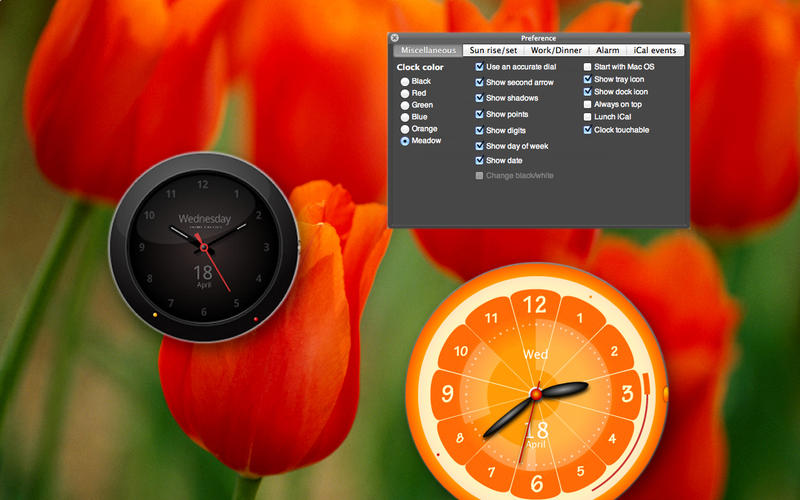
As you very well know and is shown in the screenshot above, there can be various utilities put on the right hand side of the menu bar. There are in fact two types of such menu bar items, one known as NSMenuExtra'>NSMenuExtra's and another known as NSStatusItem'>NSStatusItem's. The former are loaded and displayed by SystemUIServer'>SystemUIServer, a process provided by the system. The latter can be displayed by any app written by any developer. One good thing about the former is that you can rearrange them by ⌘-dragging the menu items. I have no idea why ⌘-dragging was not provided for the latter by the system. (On macOS Sierra 10.12, Apple finally implemented and enabled ⌘-dragging for all NSStatusItem's, including this port of MenuMeters. But this happened later than the need to port MenuMeters to El Capitan 10.11.)
Anyway, due to this better behavior of NSMenuExtra's, people often wanted to write their own. In fact until and including OS X 10.1, Apple allowed it. But since 10.2, Apple had a code that blocked SystemUIServer to load non-system-provided NSMenuExtra's. But until Yosemite, there was a known way to work around it, available as an open-source code as MenuCracker. MenuMeters used this to inject their own NSMenuExtra's to SystemUIServer; in fact MenuMeters' author is one of the main authors of MenuCracker.
Essentially, until Yosemite, SystemUIServer had a fixed list of allowed NSMenuExtras. MenuCracker was an NSMenuExtra that pretended to be one of those allowed ones, which, once loaded inside SystemUIServer, removed these checks, so that more NSMenuExtras can be loaded without any problem. In El Capitan, Apple added a more stringent check of the allowed NSMenuExtra's, and MenuCracker no longer works.
So, how did I port MenuMeters to El Capitan, then? Well, I just gave up having ⌘-dragging. Then all I had to do was to, basically speaking, replace the occurrences of 'NSMenuExtra' by 'NSStatusItem', since the two APIs are almost the same.
Itunes Os X 10.11 4 Or Later Download Mac
Installing Mac OS X El Capitan. The installation process of mac os el Capitan includes two methods. The first method is termed as an upgrade install, also known as the default method. The second method is known as a clean install. Mac OS X El Capitan 10.11 DMG Install and Download. Upgrade install-Follow to below steps-Visit the Mac App Store. Download Mac OS X El Capitan 10.11 latest bootable DMG image for Macintosh. Mac OS X El Capitan 10.11 is the twelfth major release of Mac OS X now known as macOS. Mac OS X El Capitan 10.11 Review. MacOS X El Captain is the successor of OS X Yosemite providing numerous powerful features enhancements and better performance than the previous releases.